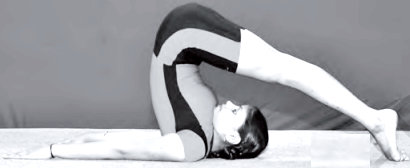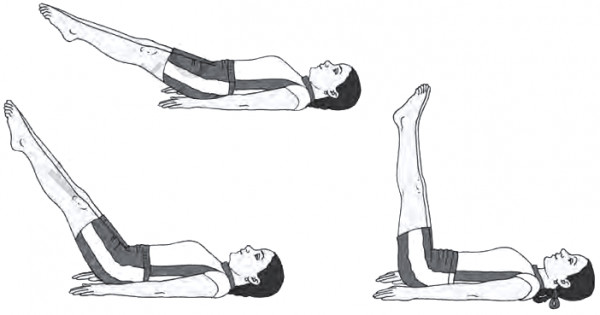Hala in Sanskrit and Hindi means ‘plough’. In the final position of this asana, the body resembles the shape of a plough. As plough makes the hard ground soft, in this asana the veins are stretched which reduces the stiffness of the body.

Let us perform Halasana by following the steps given below:
1. Lie in supine position, legs together and arms beside the body.
2. Keeping the knees straight, raise the legs up to 30°.
3. Raise the legs further up to 60°.
4. Raise the legs still further up to 90°, keeping them vertical and straight.

5. Pressing the arms raise the trunk by lowering the legs over the head, the toes touching the ground. Push the legs a little beyond the head.
6. Keep the arm straight on floor. Maintain the position for 5-10 seconds.
7. To come back, remove the arms, slowly lower the back and buttocks to the ground, bring the legs to 900 position. Lower the legs to starting position.
Remember the following points:
| Dos |
Don’ts |
| Go to the different stages slowly and retain them for some time. |
Avoid giving any type of jerk to the body. |
| Give the support of the hands to the back while raising the trunk. |
Do not withdraw the support of the hand at the back until the legs touch the ground. |
| Keep the knees straight through all the stages of the asana. |
Do not force the legs to touch the ground, if it is difficult. |
| Balance weight on hands and shoulders. |
|
Benefits
- It gives good exercise to the thyroid gland/parathyroid gland.
- It gives a good stretch to the spinal column and back deep muscles, making the spine strong and healthy.
- It helps in increasing the height of children.
- It alleviates problem of dyspepsia and constipation is removed.
Limitation
- Practice of this asana should be avoided in case of stiffness in spine, cervical spondylities, hernia, high blood pressure and slipped disc.